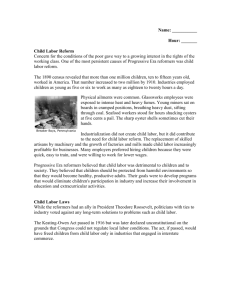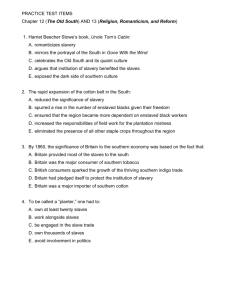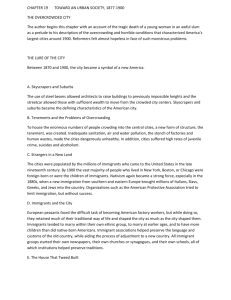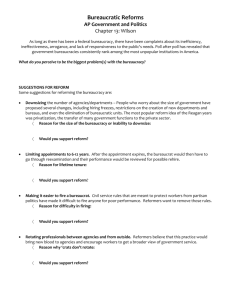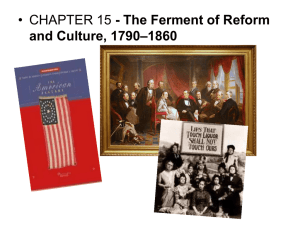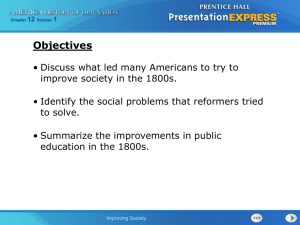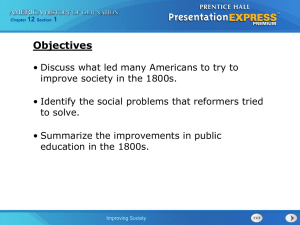The Ferment of Reform and Culture - Community Unit School District
advertisement
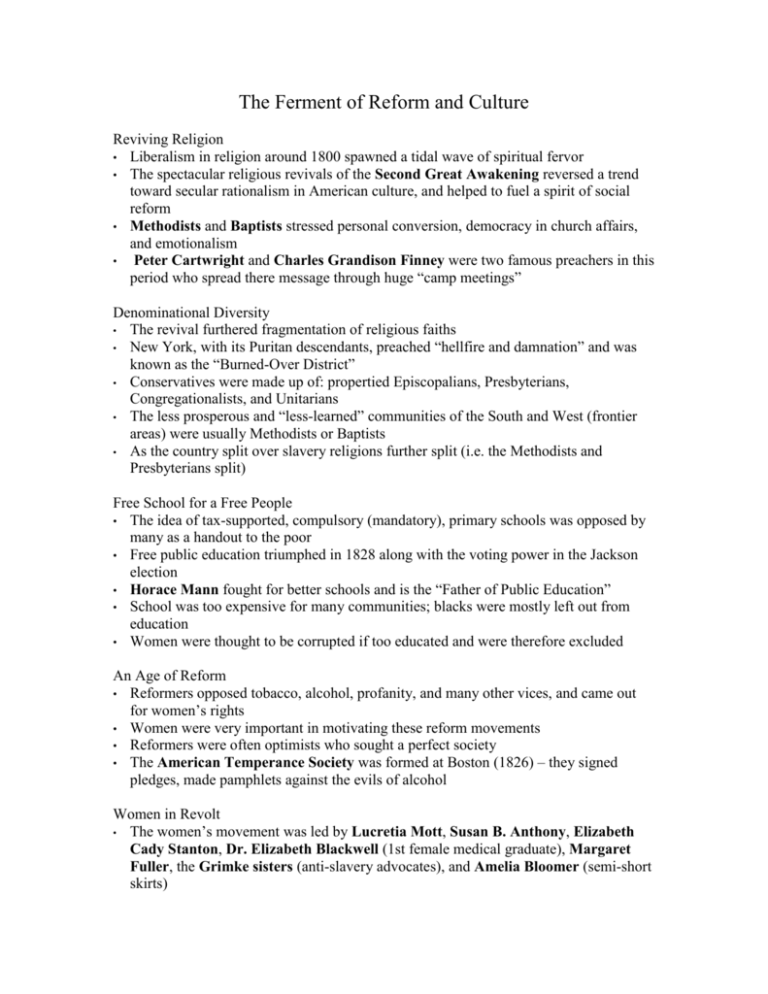
The Ferment of Reform and Culture Reviving Religion • Liberalism in religion around 1800 spawned a tidal wave of spiritual fervor • The spectacular religious revivals of the Second Great Awakening reversed a trend toward secular rationalism in American culture, and helped to fuel a spirit of social reform • Methodists and Baptists stressed personal conversion, democracy in church affairs, and emotionalism • Peter Cartwright and Charles Grandison Finney were two famous preachers in this period who spread there message through huge “camp meetings” Denominational Diversity • The revival furthered fragmentation of religious faiths • New York, with its Puritan descendants, preached “hellfire and damnation” and was known as the “Burned-Over District” • Conservatives were made up of: propertied Episcopalians, Presbyterians, Congregationalists, and Unitarians • The less prosperous and “less-learned” communities of the South and West (frontier areas) were usually Methodists or Baptists • As the country split over slavery religions further split (i.e. the Methodists and Presbyterians split) Free School for a Free People • The idea of tax-supported, compulsory (mandatory), primary schools was opposed by many as a handout to the poor • Free public education triumphed in 1828 along with the voting power in the Jackson election • Horace Mann fought for better schools and is the “Father of Public Education” • School was too expensive for many communities; blacks were mostly left out from education • Women were thought to be corrupted if too educated and were therefore excluded An Age of Reform • Reformers opposed tobacco, alcohol, profanity, and many other vices, and came out for women’s rights • Women were very important in motivating these reform movements • Reformers were often optimists who sought a perfect society • The American Temperance Society was formed at Boston (1826) – they signed pledges, made pamphlets against the evils of alcohol Women in Revolt • The women’s movement was led by Lucretia Mott, Susan B. Anthony, Elizabeth Cady Stanton, Dr. Elizabeth Blackwell (1st female medical graduate), Margaret Fuller, the Grimke sisters (anti-slavery advocates), and Amelia Bloomer (semi-short skirts) • • The Seneca Falls Women’s Rights Convention (1848) – held in NY, it was a major landmark in women’s rights Declaration of Sentiments – it demanded ballot for women, and launched modern women’s rights movement Scientific and Artistic Achievements • Early Americans were interested in practical science rather than pure science (i.e., Jefferson and his newly designed plow) • U.S. had traditionally imitated European styles of art (aristocratic subjects, dark portraits, stormy landscapes) • During the nationalism upsurge after the War of 1812, U.S. painters and writers created uniquely American work • Transcendentalism clashed with John Locke who argued knowledge came from the senses through observation; for transcendentalists, truth came not by observation alone, but “transcends” the senses Portrayers of the Past • George Bancroft – founded the naval academy; published a U.S. history book and was known as the “Father of American History” • William H. Prescott - published on the conquest of Mexico and Peru • Francis Parkman - published on the struggle between France and England in colonial North America • Historians were all from New England because they had well-stocked libraries and strong literary tradition; therefore, an anti-South bias developed
